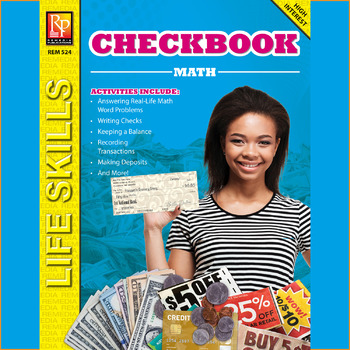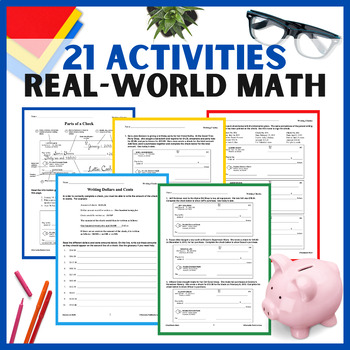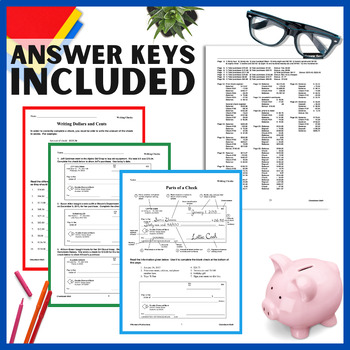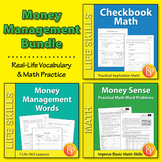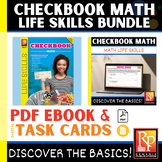Checkbook Activities: Life Skills Word Problems - Deposits - Register - No Prep
- PDF
What educators are saying
Also included in
- What better way to prepare students for real world money situations than money math word problems? This step-by-step program prepares students for the real world by teaching money management words, introducing students to writing checks and balancing a check register, and offering plenty of practicPrice $13.95Original Price $20.35Save $6.40
- More than 280 Math Activities that focus on Life Skills using a Checkbook, Bank Account, Credit Card, Budget, Finding Bargains, and more! Just read the reviews! With this easy-to-use program you'll have everything you need for your life skills program, financial literacy or consumer math classes!Price $42.45Original Price $47.91Save $5.46
- Life skills such as being able to shop on websites, handling money, budget your money are important in everyday lives. Many of these special education workbooks will be among the most important educational tools for your students that apply to their daily lives. Realistic images make these suitablePrice $345.00Original Price $393.61Save $48.61
- These activities will build practical math life skills! After learning how to write a check, students are challenged with real-life finance word problems. First they must solve a math question. Next they are required to write a check for the correct amount, record the transactions, and keep track ofPrice $10.95Original Price $15.90Save $4.95
Description
Are you ready to watch your students master the skill of writing checks and balancing a checkbook?! These no prep activities will build practical math life skills! Students read short, real-life-situation word problems, solve for answers, write checks for money spent, record transactions, and keep track of their balances. To extend learning, extra blank checks, checkbook registers, and account balance forms are also included.
HOW THE BOOK IS USED:
These essential hands-on lessons require NO PREP! Just print and use!
After learning how to write a check, students are challenged with real-life finance word problems. First they solve a math question. Next they are challenged to write a check for the correct amount, record the transactions, and keep track of the balances.
ABOUT THIS BOOK:
Of the many life skills students gradually learn, the handling of and accounting for money is an important survival skill objective. Early knowledge of the wisdom of saving and spending in a responsible way helps to establish good, life-long money management habits.
Checkbook Math teaches the practical use of a checking account. It gives clear, simple instructions on how to write checks and includes plenty of check-writing practice. Students also learn how to record checks, keep track of balances, and add deposits to their accounts. Real-life situation word problems add reality and interest to this learning experience.
Example Activity:
Carl took his car to Hal’s Service Station and had his car’s engine tuned-up for $29.95, bought a new battery for $39.95, and had the oil changed for $9.95. For what amount did he need to make a check out to Hal’s?
Table of Contents:
Writing Checks.............................................................. 1 - 10
Keeping a Balance ....................................................... 11 - 12
Writing Checks/Keeping a Balance ............................ 13 - 20
Making Deposits................................................................ 21
Recording Transactions............................................... 22 - 23
Making/Recording Transactions ........................................ 24
Writing Checks/Keeping a Balance ................................... 25
Writing Dollars and Cents on Checks (Glossary) .............. 26
Blank Checks........................................................................27
Blank Check Registers........................................................ 28
This Book is Part of our Life Skills Math Series.
Life Skills Math Series:
- Checkbook Math
- Bank Account Math
- Budget Math
- Bargain Math
- Credit Card Math
Grade Level: 6 - 12
Reading Level: Grades 6 - 8
Interest Level: Grades 6 - 12
Bundle & Save! Improve your students' real-life money skills! Buy this title in the Money Management Math Word Problems & Vocabulary {Bundle} and save 25%!

